- Home
- Diana Wynne Jones
Reflections
Reflections Read online
REFLECTIONS
On the Magic of Writing
DIANA WYNNE JONES
Contents
Cover
Title Page
Foreword, by Neil Gaiman
Reflecting on Reflections, by Charlie Butler
Preface
The Children in the Wood
The Shape of the Narrative in The Lord of the Rings
Two Kinds of Writing?
When I Won the Guardian Award
Reading C. S. Lewis’s Narnia
Creating the Experience
Fantasy Books for Children
The Value of Learning Anglo-Saxon
The Halloween Worms
A Day Visiting Schools
Writing for Children: A Matter of Responsibility
The Heroic Ideal: A Personal Odyssey
A Talk About Rules
Answers to Some Questions
Some Hints on Writing
A Whirlwind Tour of Australia
Lecture One: Heroes
Lecture Two: Negatives and Positives in Children’s Literature
Lecture Three: Why Don’t You Write Real Books?
Inventing the Middle Ages
Some Truths About Writing
The Origins of The Merlin Conspiracy
Review of Boy in Darkness by Mervyn Peake
Freedom to Write
Our Hidden Gifts
Characterization: Advice for Young Writers
Something About the Author
The Girl Jones
The Origins of Changeover
A Conversation with Diana Wynne Jones
Two Family Views of Diana and Her Work
Fantasies for Children
Address at Diana’s Funeral
Diana Wynne Jones Bibliography
Index
About the Author
Notes
Credits
Copyright
About the Publisher
Foreword, by Neil Gaiman
It was easy, when you knew her, to forget what an astonishing intellect Diana Wynne Jones had, or how deeply and how well she understood her craft.
She would certainly strike you when you met her as being friendly and funny, easygoing and opinionated. She was a perceptive reader (I had the enormous pleasure of spending a week with her at the Milford Writers’ Workshop, hearing her opinions on story after story) but she rarely talked about stories technically. She would tell you what she loved, and she would tell you how much she loved it. She would tell you what she didn’t like, too, but rarely wasted breath or emotion on it. She was, in conversation about stories, like a winemaker who would taste wine, and discuss the taste of the wine and how it made her feel, but rarely even mention the winemaking process. That does not mean she did not understand it, though, and understand every nuance of it.
The joy for me of reading these essays and thoughts, these reflections on a life spent writing, was watching her discuss both her life and the (metaphorical) winemaking process.
She does not describe herself in this book, so I shall describe her for you: she had a shock of curly, dark hair and, much of the time, a smile, which ranged from easygoing and content to a broad whorl of delight, the smile of someone who was enjoying herself enormously. She laughed a lot, too, the easy laugh of someone who thought the world was funny and filled with interesting things, and she would laugh at her own anecdotes, in the way of someone who had simply not stopped finding what she was going to tell you funny. She smoked too much, but she smoked with enthusiasm and enjoyment until the end. She had a smoker’s chuckle. She did not suffer fools of the self-important kind, but she loved and took pleasure in people, the foolish as well as the wise.
She was polite, unless she was being gloriously rude, and she was, I suppose, relatively normal, if you were able to ignore the swirls and eddies of improbability that bubbled and crashed around her. And believe me, they did: Diana would talk about her “travel jinx,” and I thought she was exaggerating until we had to fly to America on the same plane. The plane we were meant to fly on was taken out of commission after the door fell off, and it took many hours to get another plane. Diana accepted this as a normal part of the usual business of travel. Doors fell off planes. Sunken islands rose up beneath you if you were in boats. Cars simply and inexplicably ceased to function. Trains with Diana on them went to places they had never been before and technically could not have gone.
She was witchy, yes, and in charge of a cauldron roiling with ideas and stories, but she always gave the impression that the stories, the ones she wrote and wrote so very well and so wisely, had simply happened, and that all she had done was to hold the pen. My favorite essay in this book describes her writing process and shows the immense amount of craft and care that went into each book.
She made a family, and without her family she would not have written. She was well loved, and she was well worth loving.
This book shows us a master craftswoman reflecting on her life, her trade, and the building blocks she used to become a writer. We will meet, in these reflections, someone who has taken the elements of a most peculiar childhood (are there any non-peculiar childhoods? Perhaps not. They are all unique, all unlikely, but Diana’s was unlikelier than most) and a formidable intellect, an understanding of language and of story, a keen grasp of politics (on so many levels—personal, familial, organizational, and international), an education that was part autodidactic but in which, as you will learn here, C. S. Lewis and J. R. R. Tolkien both lectured for her, even if she was never quite sure what Tolkien was actually saying, and then, armed with all these things, becomes quite simply the best writer for children of her generation.
I am baffled that Diana did not receive the awards and medals that should have been hers: no Carnegie Medal, for a start (although she was twice a runner-up for it). There was a decade during which she published some of the most important pieces of children’s fiction to come out of the U.K.: Archer’s Goon, Dogsbody, Fire and Hemlock, the Chrestomanci books . . . these were books that should have been acknowledged as they came out as game changers, and simply weren’t. The readers knew. But they were, for the most part, young.
I suspect that there were three things against Diana and the medals:
First, she made it look easy. Much too easy. Like the best jugglers or slack-rope walkers, it looked so natural that the reader couldn’t see her working and assumed that the writing process really was that simple, that natural, and that Diana’s works were written without thought or effort or were found objects, like beautiful rocks, uncrafted by human hand.
Second, she was unfashionable. You can learn from some of the essays in this volume just how unfashionable she was as she describes the prescriptive books that were fashionable, particularly with teachers and those who published and bought books for young readers, from the 1970s until the 1990s: books in which the circumstances of the protagonist were, as much as possible, the circumstances of the readers, in the kind of fiction that was considered Good For You. What the Victorians might have considered an “improving novel.”
Diana’s fiction was never improving, or if it was, it was in a way that neither the Victorians nor the 1980s editors would have recognized. Her books took things from unfamiliar angles. The dragons and demons that her heroes and heroines battle may not be the demons her readers are literally battling—but her books are unfailingly realistic in their examinations of what it’s like to be, or to fail to be, part of a family, the ways we fail to fit in or deal with uncaring carers.
The third thing that Diana had working against her was this: her books are difficult. Which does not mean that they are not pleasurable. But she makes you work as a reader. As an adult reader coming to a Diana Wynne Jones book I expected to
reread great chunks of a book as I reached the end, all puzzled and filled with brow-crinkling “How did she do that?” and “Now wait a minute, I thought . . .” and I would put it together, and then see what she had done. I challenged her on this, and she told me that children read more carefully than adults did and rarely had that trouble—and indeed, when I came to read Diana’s books aloud to Maddy, my daughter, I discovered that they weren’t ever problematic or even hard. All the pieces were there for you. You just had to be paying attention to everything she wrote, and to understand that if there was a word on the paper, it was there for a reason.
I don’t think she minded not having the medals. She knew how good she was, and she had generations of readers who had grown up reading and loving her work. She was read, and she was loved. As the years went on and the readers who had discovered her when young grew up and wrote about her, talked about her, wrote fiction influenced by her; as magical fiction for children became less unusual; as her books sold more with each year that passed, Diana knew that what she had written had worked, and found its readers, and that was all that, in the end, mattered.
I am a handful of years too old to have read Diana’s books as a boy. I wish I had—she would have been one of those people who formed the way I saw the world, the way I thought about it and perceived it. Instead, reading her, it felt familiar, and when, in my twenties, I read all of Diana’s books that I could find, it felt like I was coming home.
If, like me, you love Diana’s fiction, and you wish to learn more about the person, who she was and how she thought, then this book will enlighten you. But it will give you more than that. Her writings assembled in one place tell us how she thought about literature and the reasons for literature, about the place of children’s fiction in the world, about the circumstances that shaped her and her own understanding and vision of who she was and what she did. It is ferociously intelligent, astonishingly readable, and as with so much that Diana Wynne Jones did, she makes each thing she writes, each explanation for why the world is as it is, look so easy.
—Neil Gaiman
Reflecting on Reflections, by Charlie Butler
By the time I first read Diana Wynne Jones I was already an adult—but that doesn’t matter. Many of her readers encounter her later in life, and those who know her as children tend to stick with her into adulthood. That is one of her qualities: her books change and grow as you do.
It is a testimony to the impression Diana makes on her readers that so many have a “How I first came across Diana Wynne Jones” story. Mine is not especially dramatic, but in retrospect our accidental encounter feels providential. When I was a young lecturer, one of my jobs was to sit for an hour each week in a far-flung office in a far-flung corner of my university, ready to offer course advice to any students who might come seeking it. No students ever did come, and I would pass the time by reading. One week, finding myself accidentally bookless, I browsed through the room’s many cupboards (it was a storeroom at heart, not an office at all) and found there a copy of Charmed Life by a writer called Diana Wynne Jones. The name was familiar, but I knew nothing about her. And so, having almost an hour to fill, I sat down and began to read.
That was my first Diana Wynne Jones, and from the opening page, with its mysterious Edwardian-but-not-quite milieu and its paddleboat accident (as shocking and excitingly peremptory, in its way, as the angry rhinoceros in Dahl’s James and the Giant Peach), I was hooked—by the twistiness, the wit, the superabundant imagination, and the emotional wisdom. These were among the qualities I came to associate with Diana long before I met her in person or began to write about her work. I soon learned to value others, too, and it may be worth enumerating them.
First, there is her range. Diana wrote books for young children, for older children, and for adults. She wrote picture books, chapter books, full-length novels, poetry, plays, and non-fiction. She wrote fantasy, science fiction, romance, farce, and satire; and she wrote books that looped the loop, refusing to be confined within any generic box. She could handle outrageous comedy, but also turn on a sixpence and evoke subtle shades of desire, grief, loneliness, bliss, and love, and do so in prose that never strove to draw attention to its own virtuosity. She could also, as this volume attests, turn out a pretty mean academic essay when she set her mind to it.
Her range is equaled by her stamina, shown not just in producing so many books over such a long period (more than forty books in forty-one years)—something other writers have done only by sticking to a winning formula—but by keeping her art so fresh. No book of hers is simply a rehash of a previous one. In some cases she has invented, or reinvented, entire genres. Edith Nesbit wrote urban fantasy, but not like Archer’s Goon. C. S. Lewis wrote about alternative worlds, but not like the Chrestomanci books. And J. R. R. Tolkien, for all the depth and tenacity of his imagination, would never have come up with the strange loop that is Hexwood, or with Deep Secret, or the Dalemark quartet.
Diana Wynne Jones was a prodigiously creative writer. This is true not only in terms of the number and range of books she produced, but also in her ability to load every rift with ore. Some of her stories involve mundane situations or everyday phrases, seen from new angles and stretched out to reveal their latent absurdity. Elsewhere you will find a rich idea lying apparently unregarded in a single line. The Merlin Conspiracy, for example, features a short conversation with an elf. Diana created elves in a wide variety of models and moral orientations, by the way, but this elf is relatively benign, even though he irritates Roddy Hyde (who has a herb that enables her to understand elfish), because he insists on practicing his broken English on her like an earnest foreign tourist: “I need learn!” This is funny enough, but perhaps the most memorable thing about the elf is the way he explains his appearance and disappearance into an earthen mound with the throwaway sentence, “Space is as a folding screen to the little people.” So much is suggested by that one phrase that many novelists would have been tempted to extrapolate a novel from it. But so little is made explicit that it remains in the mind like a grenade with the pin already pulled—a phrase whose potential is all the more powerful for being unrealized. What does it mean, for space to be “like a folding screen”? Diana was a writer abundant in ideas: realms and islands were as plates dropped from her pocket. But she also knew her craft and knew that sometimes being prolific is a matter of knowing when not to speak.
Then there is her magic. No one does magic like Diana Wynne Jones. In the course of her books she runs the gamut of magical styles, and demonstrates that she knows quite a frightening amount about the technicalities, too. She has a sure instinct for the way magic works: totem magic, social magic, transformation magic, and the rest. Some of her spells are grand, formal affairs, like the climax of The Merlin Conspiracy. Others are casual, like the way Sophie in Howl’s Moving Castle unwittingly charms the hats she decorates, simply by talking to them: “You have mysterious allure.” Sometimes, as in Fire and Hemlock, she keeps you guessing as to whether any magic has taken place at all. At others she shocks you with something startlingly and undeniably magical, as when the eponymous villain of Black Maria, who until this point has primarily used the powers of suggestion and social manipulation, turns her nephew into a wolf.
Diana’s humor is of course everywhere. Her books are full of verbal wit, but she rejoices too in physical comedy, and in the spectacle of people acting in absurd ways that appear to them to be the height of good sense—a tendency she laughed at but also recognized as an aspect of the human condition. Everyone will have favorite images from her books: Wizard Howl covered with self-indulgent green slime; the conga of alien magicians and witches in A Sudden Wild Magic; Chrestomanci giving the gods flu in “The Sage of Theare”; the giant sentient toffee bars that drape themselves over the radiators in The Ogre Downstairs; the Importance of Being Earnest-style multiple revelations of identity and relationship that feature in several of her final chapters. Then there is her satire—nowhere packaged more convenientl
y than in The Tough Guide to Fantasyland, a book that it is almost impossible not to quote from (and I resist the temptation here only because Diana quotes from it herself in two pieces in this book).
“The world is not enough,” Diana once said, and for her this was true. Her imagination shuffled universes like cards, or bent them into origami shapes. It was not enough for her to invent parallel worlds. She invented multiple multiverses: the worlds of Chrestomanci, of The Homeward Bounders, of Deep Secret and The Merlin Conspiracy, of Dalemark, of A Sudden Wild Magic, of The Dark Lord of Derkholm and Year of the Griffin, of The Game—each has its own geography and ecology, its own politics and fashions, its own rules of physics, its own magic. Some are linked to our own world through having split off from it at earlier points in history; others are connected in different ways, or not at all. Diana never insists on surplus exposition, but her worlds have a conviction and a coherence that communicate themselves immediately. As she once put it:
You have to know enough about a world to be able to show things in the foreground that bring the background with them. You must have it firmly enough in your mind so that it all hangs together. You don’t have to say that there are wild beasts in the wood, so long as you have got the right setup where there might be.
All her worlds have that thought-through, felt quality. The same applies to her characters: she takes seriously the advice that she gives aspiring writers in an article in the present collection, that whatever appears on the page about a character, the author must know many times more again—about his or her appearance, past, taste in clothes and music. Diana was adamant that such knowledge did not need to be set down explicitly but that, with people as with physical locations, if the writer knows what she is talking about, her knowledge will communicate itself. The description Virginia Woolf gave of her method in Mrs. Dalloway is no less applicable to Diana:

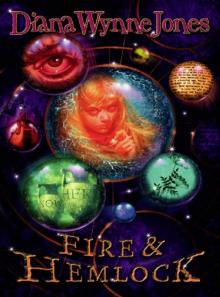 Fire and Hemlock
Fire and Hemlock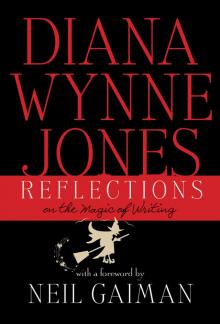 Reflections: On the Magic of Writing
Reflections: On the Magic of Writing The Game
The Game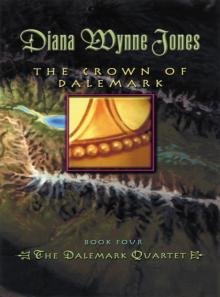 The Crown of Dalemark
The Crown of Dalemark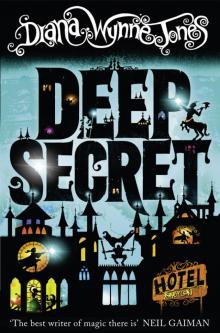 Deep Secret
Deep Secret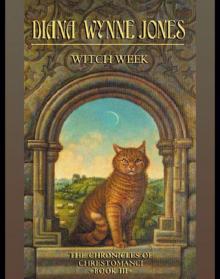 Witch Week
Witch Week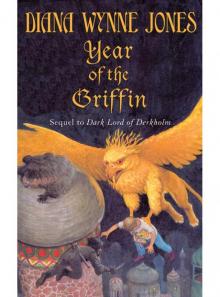 Year of the Griffin
Year of the Griffin Wild Robert
Wild Robert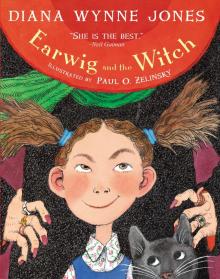 Earwig and the Witch
Earwig and the Witch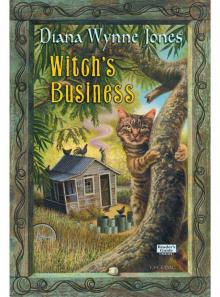 Witch's Business
Witch's Business Dogsbody
Dogsbody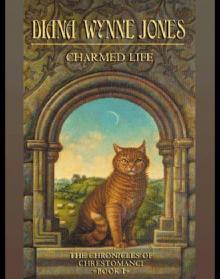 Caribbean Cruising
Caribbean Cruising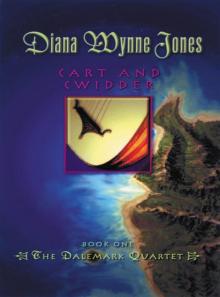 Cart and Cwidder
Cart and Cwidder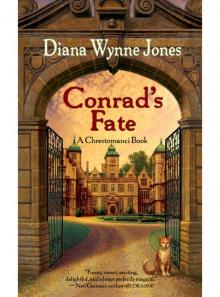 Conrad's Fate
Conrad's Fate Howl's Moving Castle
Howl's Moving Castle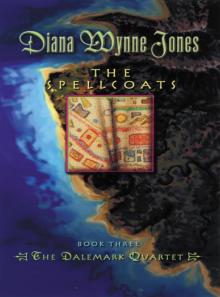 The Spellcoats
The Spellcoats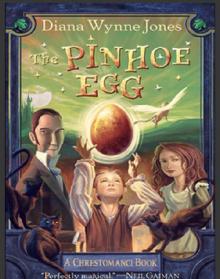 The Pinhoe Egg
The Pinhoe Egg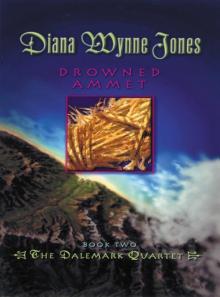 Drowned Ammet
Drowned Ammet The Ogre Downstairs
The Ogre Downstairs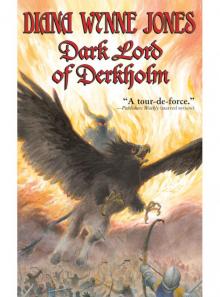 Dark Lord of Derkholm
Dark Lord of Derkholm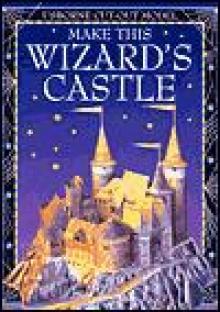 Castle in the Air
Castle in the Air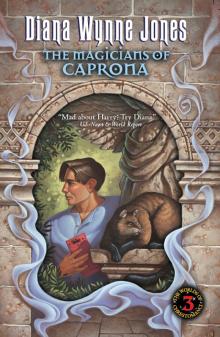 The Magicians of Caprona
The Magicians of Caprona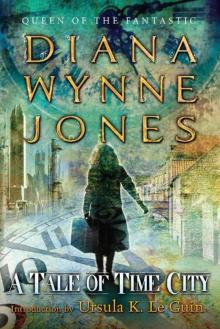 A Tale of Time City
A Tale of Time City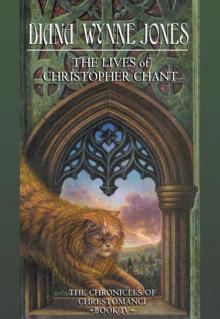 The Lives of Christopher Chant
The Lives of Christopher Chant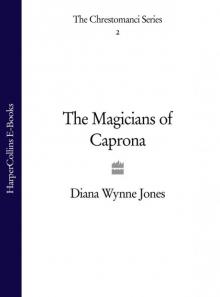 The Magicians of Caprona (UK)
The Magicians of Caprona (UK)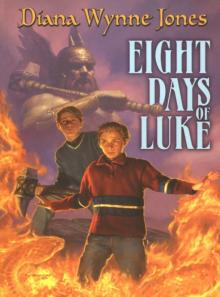 Eight Days of Luke
Eight Days of Luke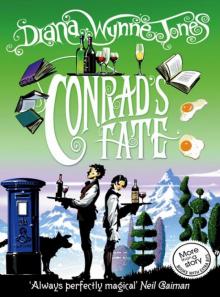 Conrad's Fate (UK)
Conrad's Fate (UK)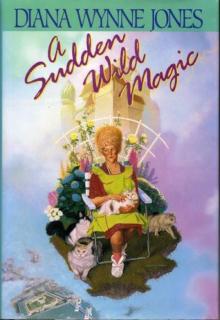 A Sudden Wild Magic
A Sudden Wild Magic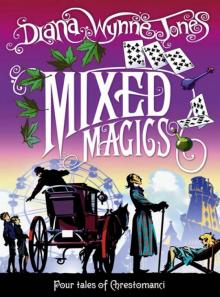 Mixed Magics (UK)
Mixed Magics (UK)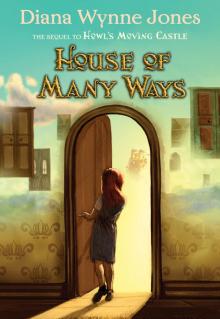 House of Many Ways
House of Many Ways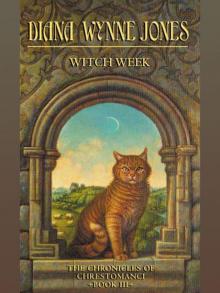 Witch Week (UK)
Witch Week (UK)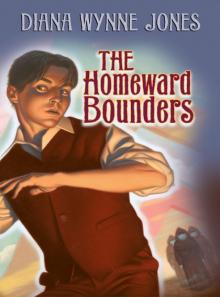 The Homeward Bounders
The Homeward Bounders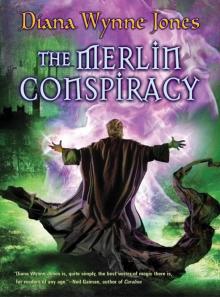 The Merlin Conspiracy
The Merlin Conspiracy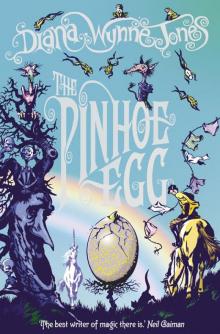 The Pinhoe Egg (UK)
The Pinhoe Egg (UK) The Time of the Ghost
The Time of the Ghost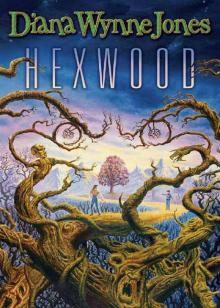 Hexwood
Hexwood Enchanted Glass
Enchanted Glass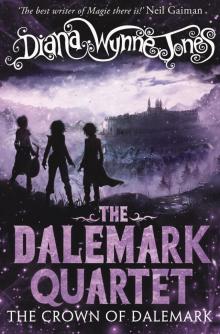 The Crown of Dalemark (UK)
The Crown of Dalemark (UK)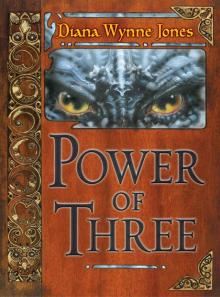 Power of Three
Power of Three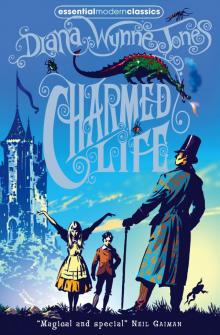 Charmed Life (UK)
Charmed Life (UK)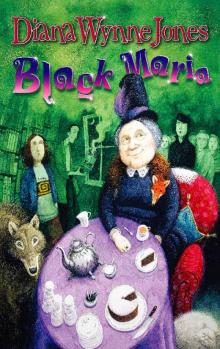 Black Maria
Black Maria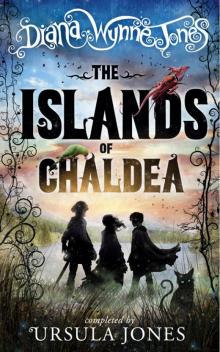 The Islands of Chaldea
The Islands of Chaldea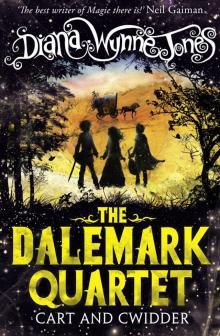 Cart and Cwidder (UK)
Cart and Cwidder (UK)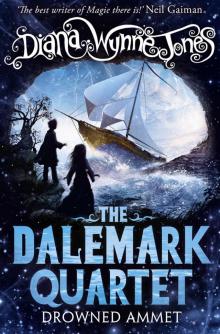 Drowned Ammet (UK)
Drowned Ammet (UK)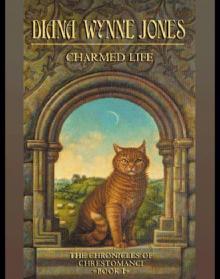 Charmed Life
Charmed Life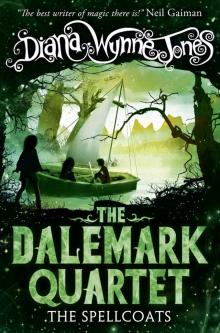 The Spellcoats (UK)
The Spellcoats (UK)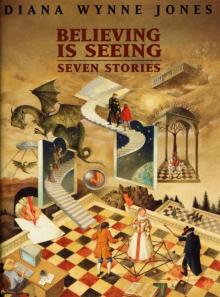 Believing Is Seeing
Believing Is Seeing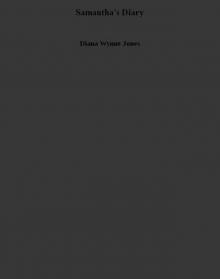 Samantha's Diary
Samantha's Diary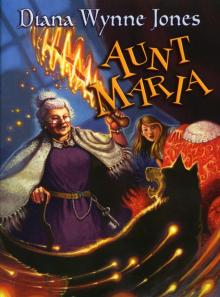 Aunt Maria
Aunt Maria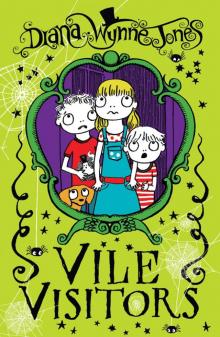 Vile Visitors
Vile Visitors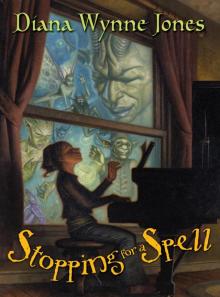 Stopping for a Spell
Stopping for a Spell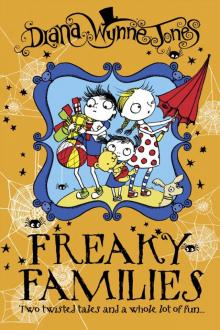 Freaky Families
Freaky Families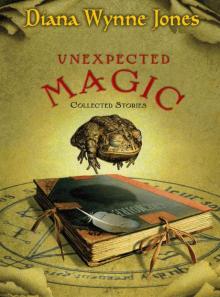 Unexpected Magic
Unexpected Magic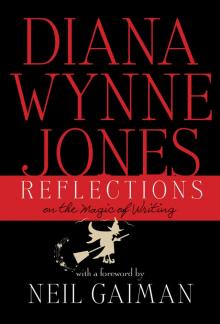 Reflections
Reflections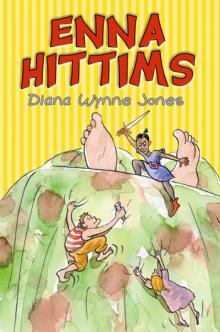 Enna Hittms
Enna Hittms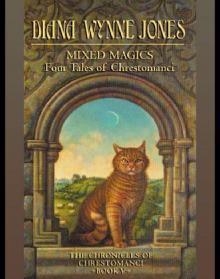 Mixed Magics: Four Tales of Chrestomanci
Mixed Magics: Four Tales of Chrestomanci